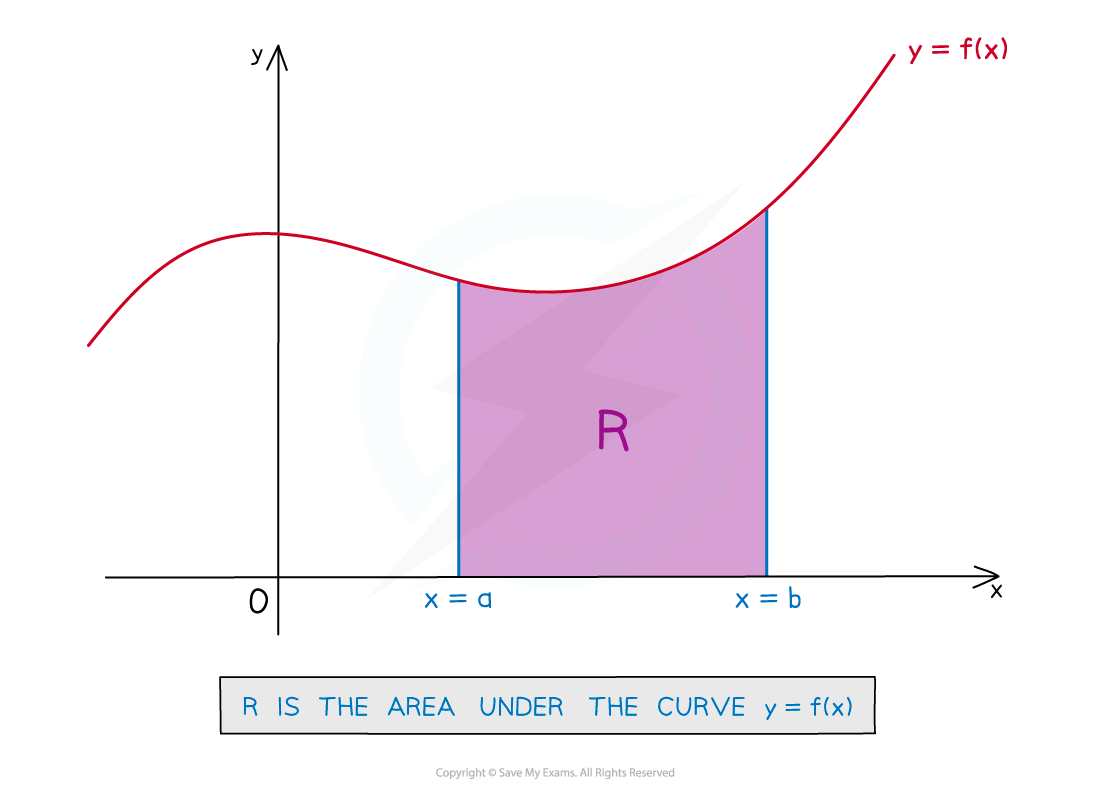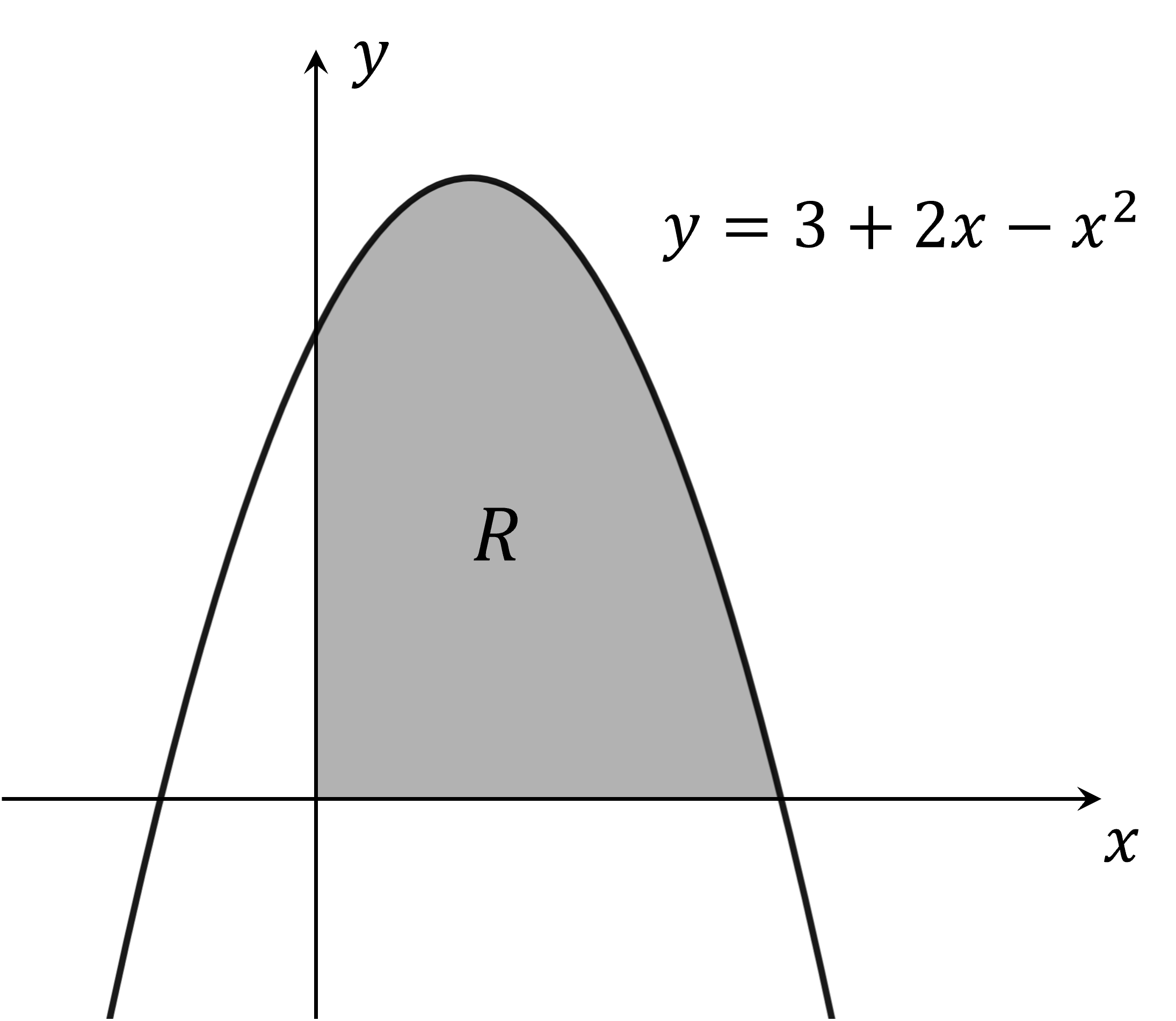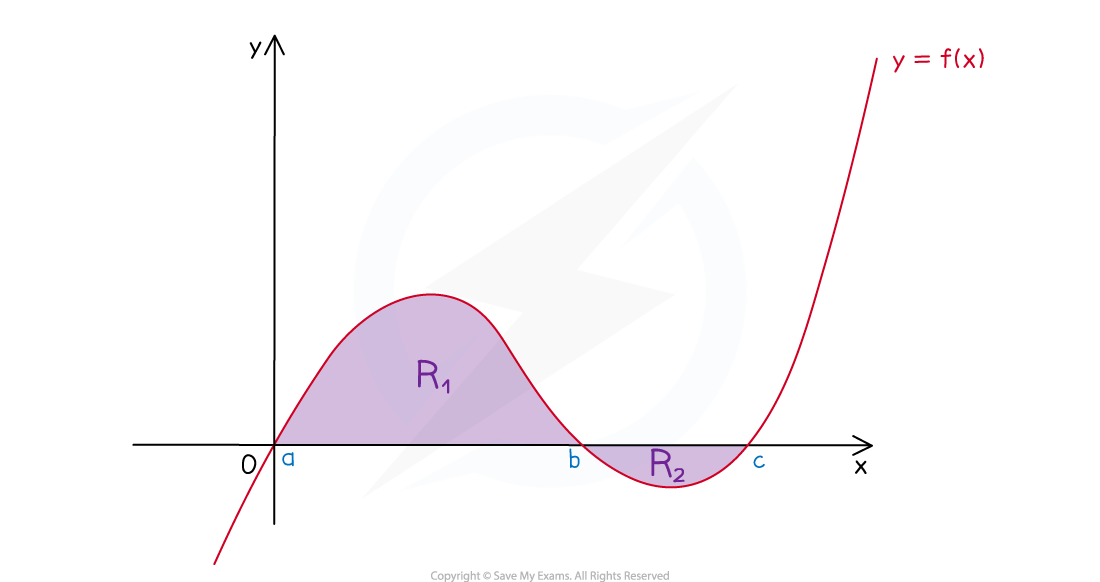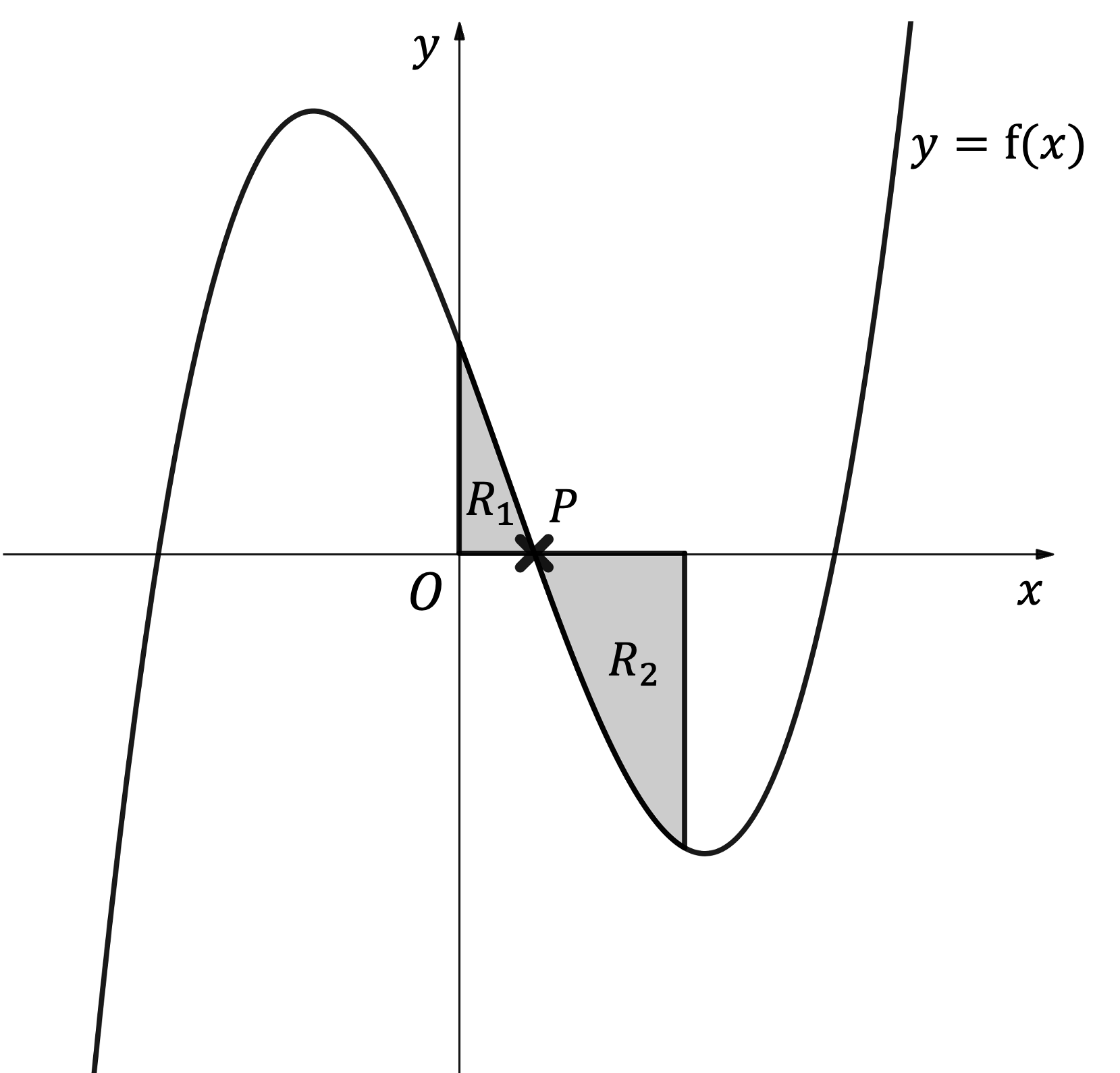Calculating Areas (Edexcel IGCSE Further Pure Maths): Revision Note
Exam code: 4PM1
Definite Integrals
What is a definite integral?
A definite integral is defined by the following formula
i.e. integrate as usual to find
then substitute to find
and
and subtract
from
to find the value of the definite integral
and
are numbers and are called the integration limits
is the lower limit
is the upper limit
the integral is 'from
to
'
A constant of integration (“
”) is not needed with definite integrals
Note that the answer to a definite integral is a number
The answer to an indefinite integral is another function
Examiner Tips and Tricks
Be careful when substituting in to find
It's quite easy to make mistakes here
Especially when fractions and negative numbers are involved
Your calculator may be able to find the value of definite integrals
You can use this to check your work
Look out for phrases in exam questions like "Use algebraic integration" or "Using calculus"
These mean that full working out of the integral 'by hand' is required
A calculator answer without working would not score marks
Worked Example
Show that
Start by expanding the brackets inside the integral
Integrate as usual (here it's a 'powers of ' integration)
Write the answer in square brackets with the integration limits outside
Now substitute 4 into that function
And subtract from it the function with 2 substituted in
And that's the answer we were asked to show!
Calculating Areas with Definite Integrals
How can I calculate areas using definite integrals?
Region
in the following diagram is the 'area under a curve' between
and
It is the region bounded by
the curve
the
-axis
and the lines
and and

The exact area of a region like region
in the diagram can be found by evaluating the definite integral
i.e. definite integrals can be used as area calculators!
Note that for this to work,
must be 'on the left' and
must be 'on the right'
i.e.
How do I form a definite integral to find the area under a curve?
The curve
and the
-axis should be obvious boundaries
but the trick can be identifying
and
i.e. the lower and upper limits of the definite integral
If a diagram is given in the question, this can help locate the limits
If a diagram is not given, then sketch one
The 'left' and 'right' boundaries may be vertical lines
In that case their equations give the integral limits
and
The
-axis may be one of the (vertical) boundaries
in that case one of the limits will be
The 'left' and 'right' boundaries don't have to be vertical lines
One or both of them could be where
intercepts the
-axis
i.e., one of the roots of the equation
In this case solve the equation
to find the limit(s)
Examiner Tips and Tricks
Look out for questions that ask you to find an indefinite integral in one part
where '
' is needed in the answer
then in a later part use the same integral as a definite integral
where '
' is not needed
Add information to any diagram provided in the question
axes intercepts
values of limits
mark and shade the area you’re trying to find
If no diagram is provided, sketch one!
Worked Example
The following diagram shows a part of the graph of the curve with equation . The region labelled
is bounded by the curve, the positive
-axis, and the positive
-axis.

Find the exact area of region .
Start by finding the integration limits.
The -axis is the left boundary, so
will be the lower integration limit
The right boundary is where the curve intercepts the -axis
Solve the equation to find its
-coordinate
We want the positive intercept, so the upper integral limit will be
Put all that info into the definite integral
Negative Integrals
What do we mean by a 'negative integral'
The answer to a definite integral is a number
This number can be positive or negative (or zero!)
The area between a curve and the
-axis may lie fully or partially below the
-axis
This occurs when the function
takes negative values within the boundaries of the area
A definite integral used to find such an area
will be negative if the area is fully under the
-axis
possibly negative if the area is partially under the
-axis
even if positive, the integral will not calculate the correct area in this case
the 'negative areas' will subtract from the 'positive areas'
How do I find the area under a curve when the curve is fully under the x-axis?

STEP 1
Write the definite integral to find the area as usualThis may involve finding the lower and upper integration limits
STEP 2
The answer to the definite integral will be negativeBut the answer will have the same 'size' as the area
So just remove the minus sign to get the area
e.g. if the value of the integral is
then the area will be
(square units)
How do I find the area under a curve when the curve is partially under the x-axis?

STEP 1
Split the area into partsthe area(s) that are above the
-axis
and the area(s) that are below the
-axis
STEP 2
Write the definite integral for each partThis may involve finding the lower and upper integration limits for each part
e.g. solving
to find where
crosses the
-axis
STEP 3
Find the value of each definite integral separatelySTEP 4
Change the negative values to positiveThen find the total area by summing the 'positive versions' of each integral
Examiner Tips and Tricks
If no diagram is provided, sketch one
This lets you see where the curve is above and below the
-axis
Then you can split up your integrals accordingly
Worked Example
The diagram below shows the graph of , where
.

The region is bounded by the curve
and the positive
- and
-axes.
The region is bounded by the curve
, the positive
-axis, and the line
.
(a) Determine the coordinates of the point labelled.
That point is one of the -axis intercepts of the function
Solve to find what those area
It has to be positive, because the point is to the right of the origin
And it has to be less than 3, because it's to the left of the line
So it must be the intercept at
(b) Find the exact total area of the shaded regions and
.
is the region between
and
It lies totally above the -axis, so the definite integral will calculate the area directly
is the region between
and
It lies totally below the -axis, so the integral will give us the negative version of the area
So the area of is
Add the two areas together to get the total area

Unlock more, it's free!
Did this page help you?